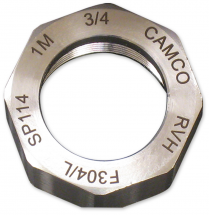Laser annealing is a metal marking technique where a metal’s surface is slowly heated and cooled to change its color and preserve its surface texture.
For metal marking, the laser annealing process is often preferred over laser engraving. In this blog, we’ll explore its advantages and disadvantages, which objects and metals can and can’t be annealed, and what type of lasers are best suited for different markings.
Advantages
There are many reasons to consider laser annealing as an alternative to laser engraving for creating a permanent mark. For one, the nooks and crannies in engraved metal surfaces can be difficult to clean and are more susceptible to corrosion or bacteria. In contrast, the annealing process removes nothing from the metal’s surface and leaves its texture unchanged.
Preserving the metal’s surface integrity is particularly important when rust or bacterial buildup can compromise the product’s utility. For example, medical instruments (which are typically made of stainless steel or titanium) require product UDIs for identification and tracking purposes. But these markings cannot be laser engraved due to sanitary concerns.
Although not regulated by the same UDI requirements, it is recommended that kitchenware and eating utensils be annealed for the same reasons. It’s simply a more sanitary way to make a permanent mark on these types of products.
Annealing is preferred whenever an object needs to retain its precise shape and internal integrity. This is the case when barcodes, serial numbers or branding need to appear on machine parts that fit into other machine parts or that can be exposed to heat and other elements. This prevents any potential warping.
Disadvantages
Annealing minimizes the risk of warping, rust and bacteria better than engraving, but it does come with certain drawbacks. Annealing takes more time than shallow engraving, which may not be desirable for companies that want to mass produce marked metal goods quickly.
Textured metal surfaces do not anneal well because the markings are only visible from the line of sight from which the laser marked the object. When viewed from other angles, grooves and other textures can conceal the marking. Even on the smooth surfaces of certain metals, a laser-annealed mark might be hard to see, which is an obvious concern for products that feature warning labels that need to be plainly visible.
Because the annealing process only changes a metal’s surface color, it is insufficient to mark certain types of products. This is why deep engraving is required by law for firearm serial numbers.
Can I anneal any steel?
Some steel won’t anneal, and not all steels can be marked at the same rate due to their carbon content, hardness and finish. Titanium and stainless steel are the most common metals and they can be marked in perfect black, though some color variation is possible. Aluminum, brass, copper, chrome, nickel, silver and gold also work well. However, painted and coated metals may have to be engraved.
Which lasers are best for which purposes?
There are two main things to consider when determining which laser is best for your annealing purposes: speed and surface shape.
The best RMI laser for speed is the XRF, which marks 30% faster than previous generations of fiber lasers, making it an excellent option for industrial manufacturers.
The best option for a surface that isn’t flat is the UM-2 – a DPSS (diode-pumped solid-state) laser with a deep focal depth. Focal depth is important in these cases because the marking area might curve out of reach of other lasers. The UM-2 is an excellent option for oddly shaped things that can’t turn in a rotary.
For a general laser capable of laser engraving different types of materials as well as annealing metals, our XRF MOPA laser is a solid option.
Whatever your goal is, we have a laser-marking system for you. If you’re unsure which one of our lasers is best for you, go ahead and send us samples of your product. We’ll run some tests and help you determine which solution best suits your needs.


